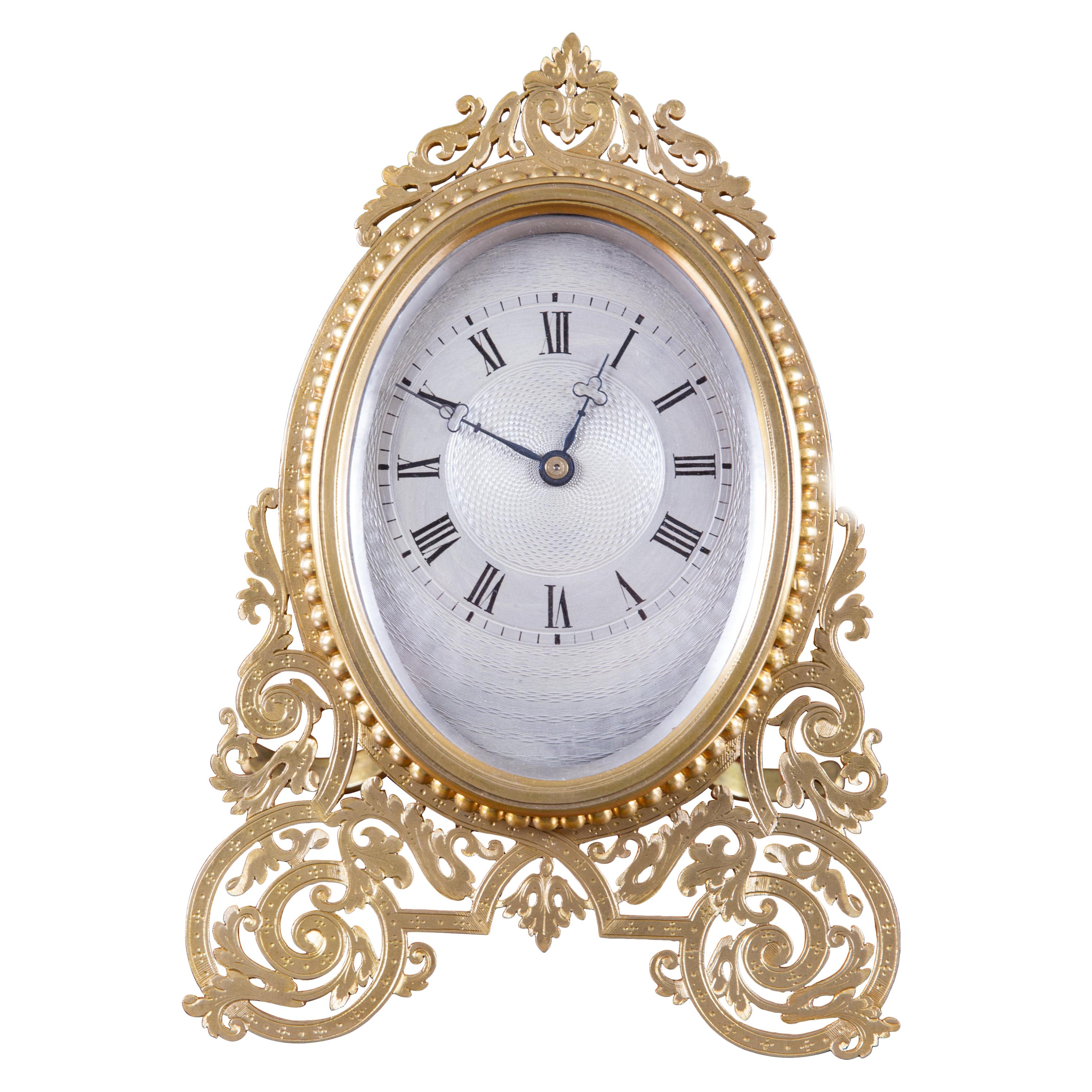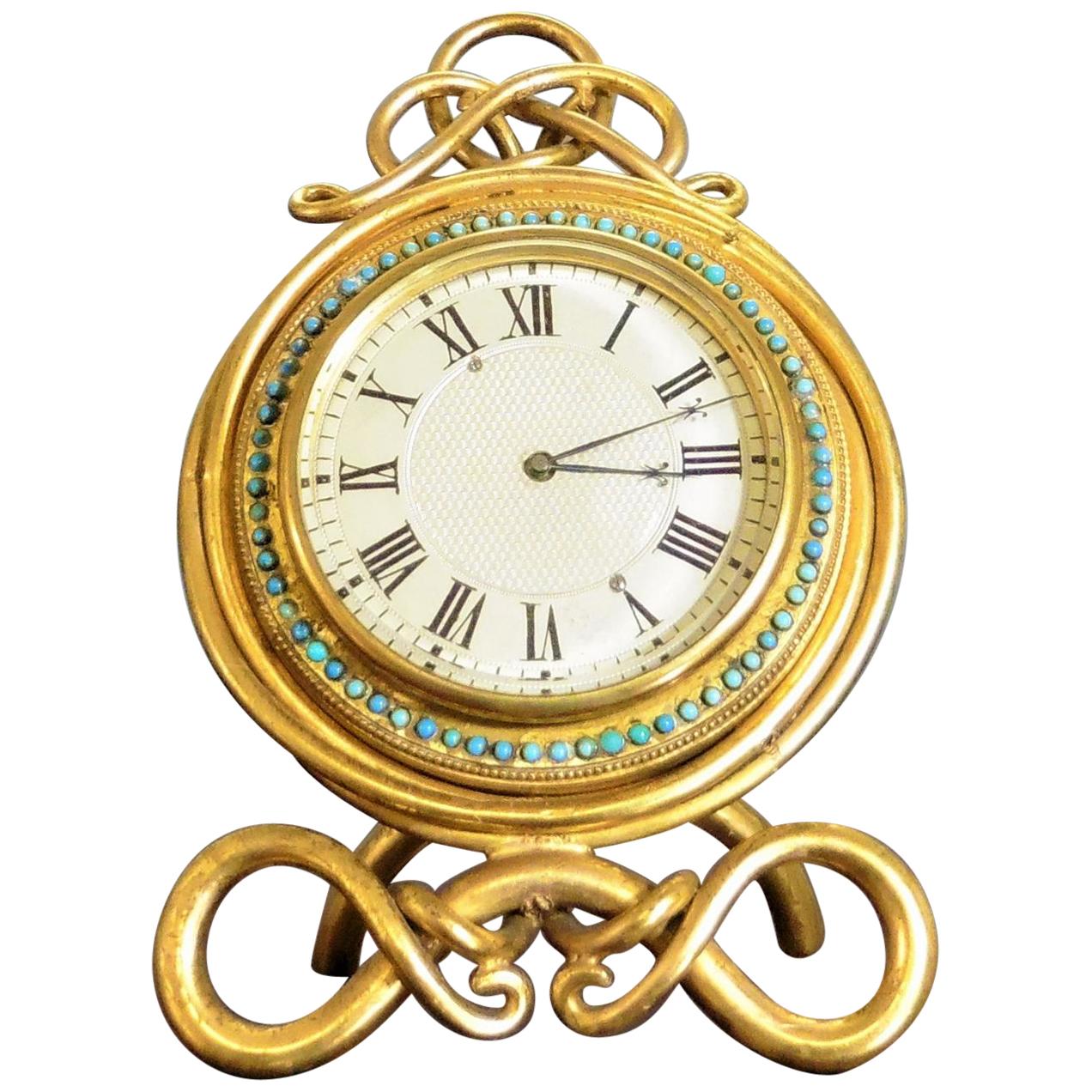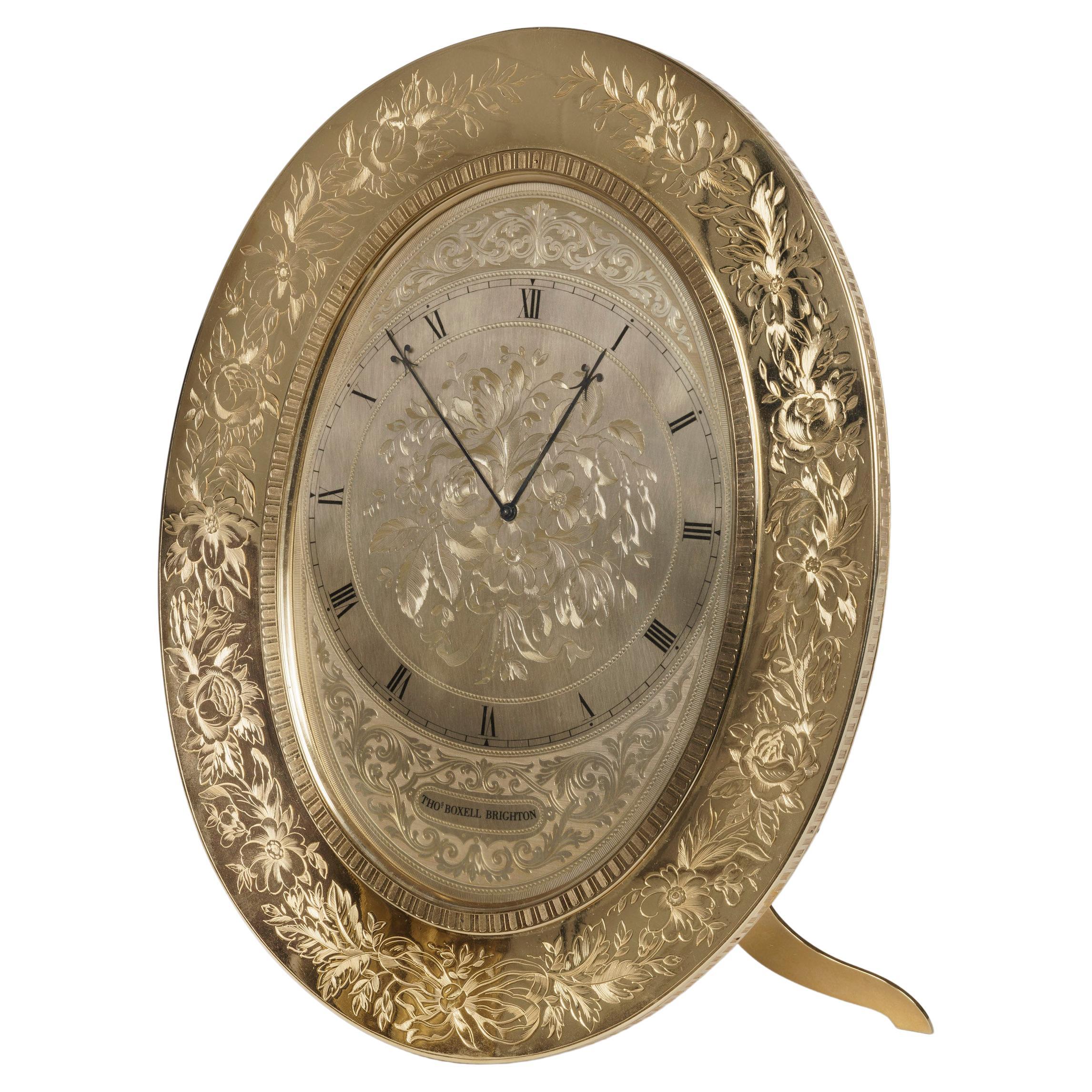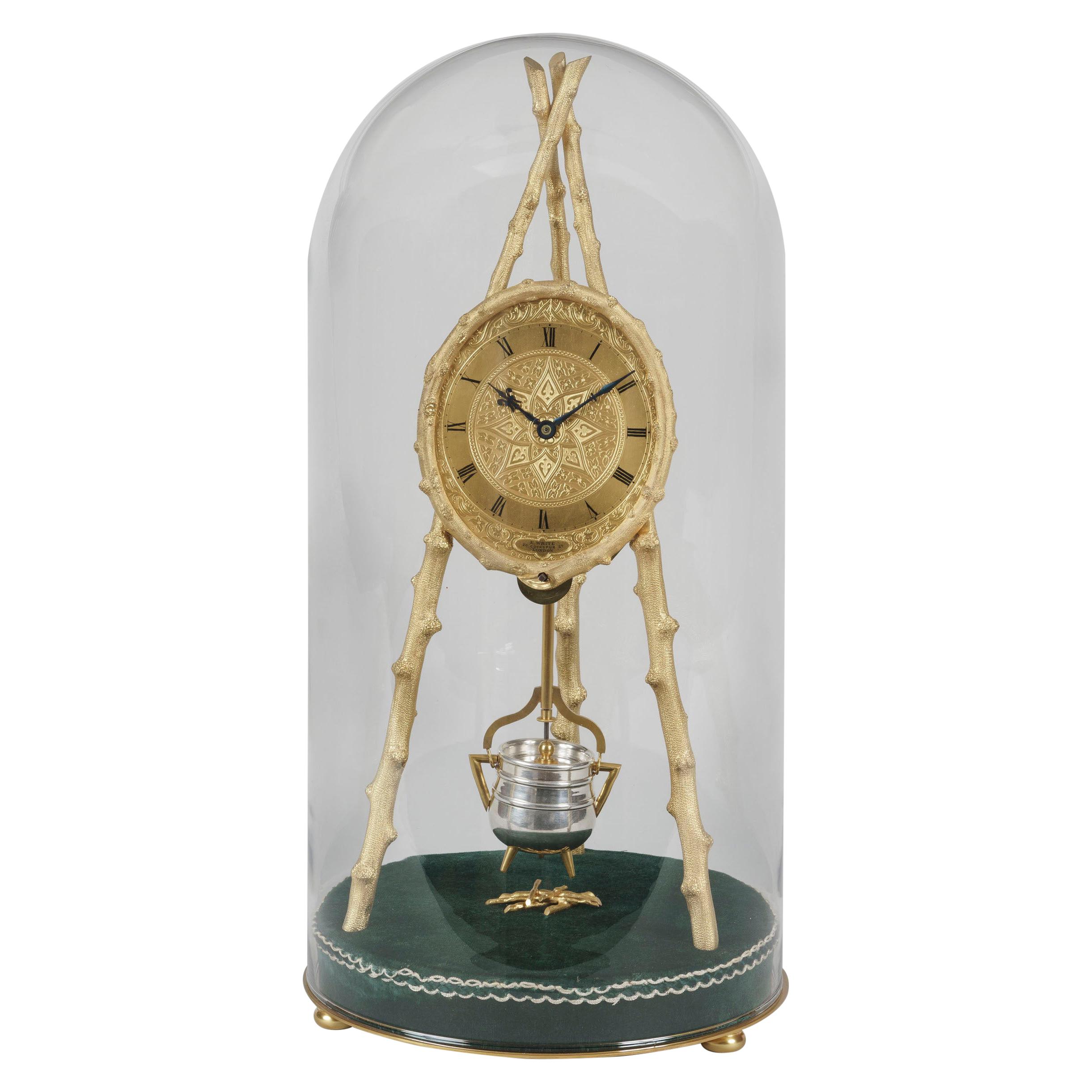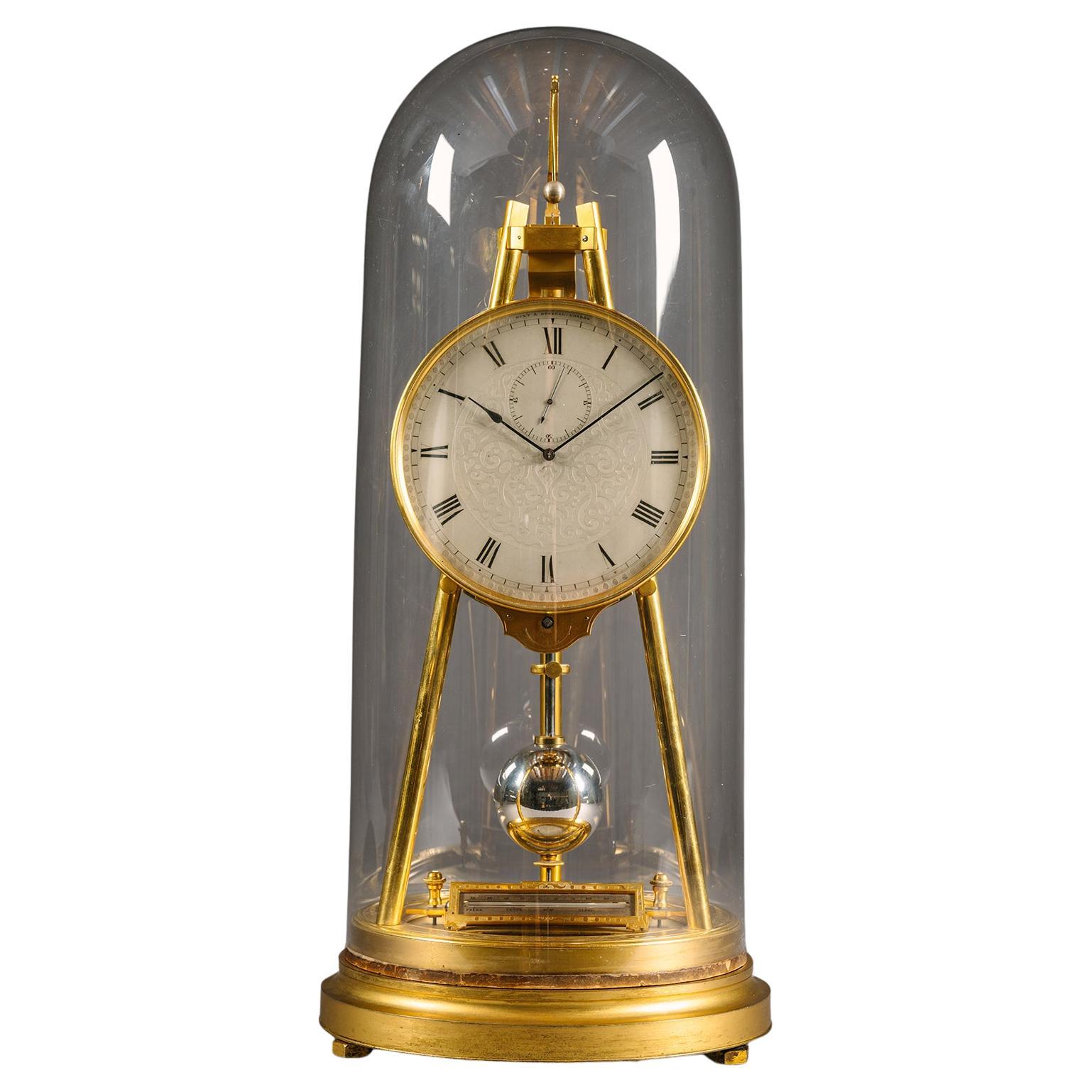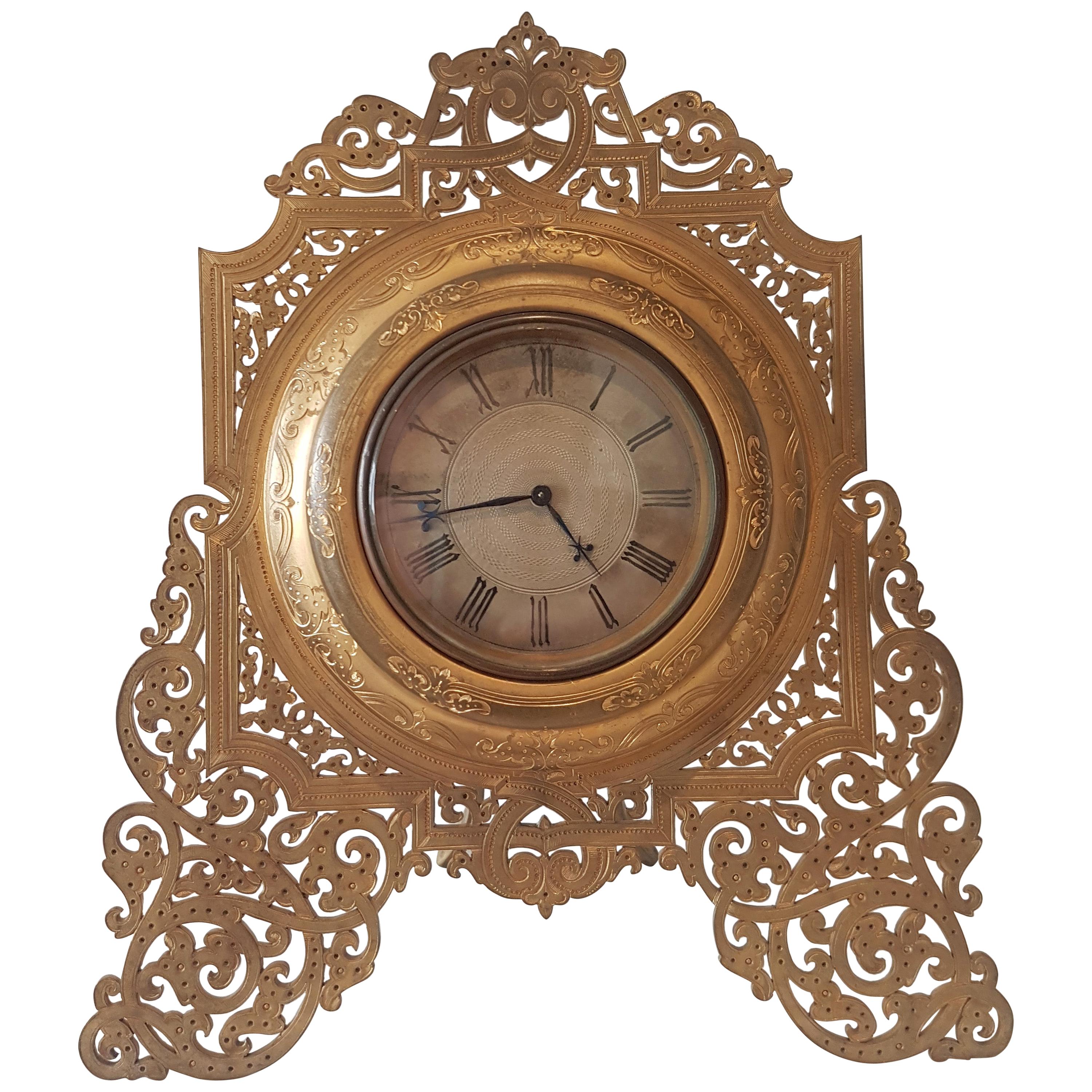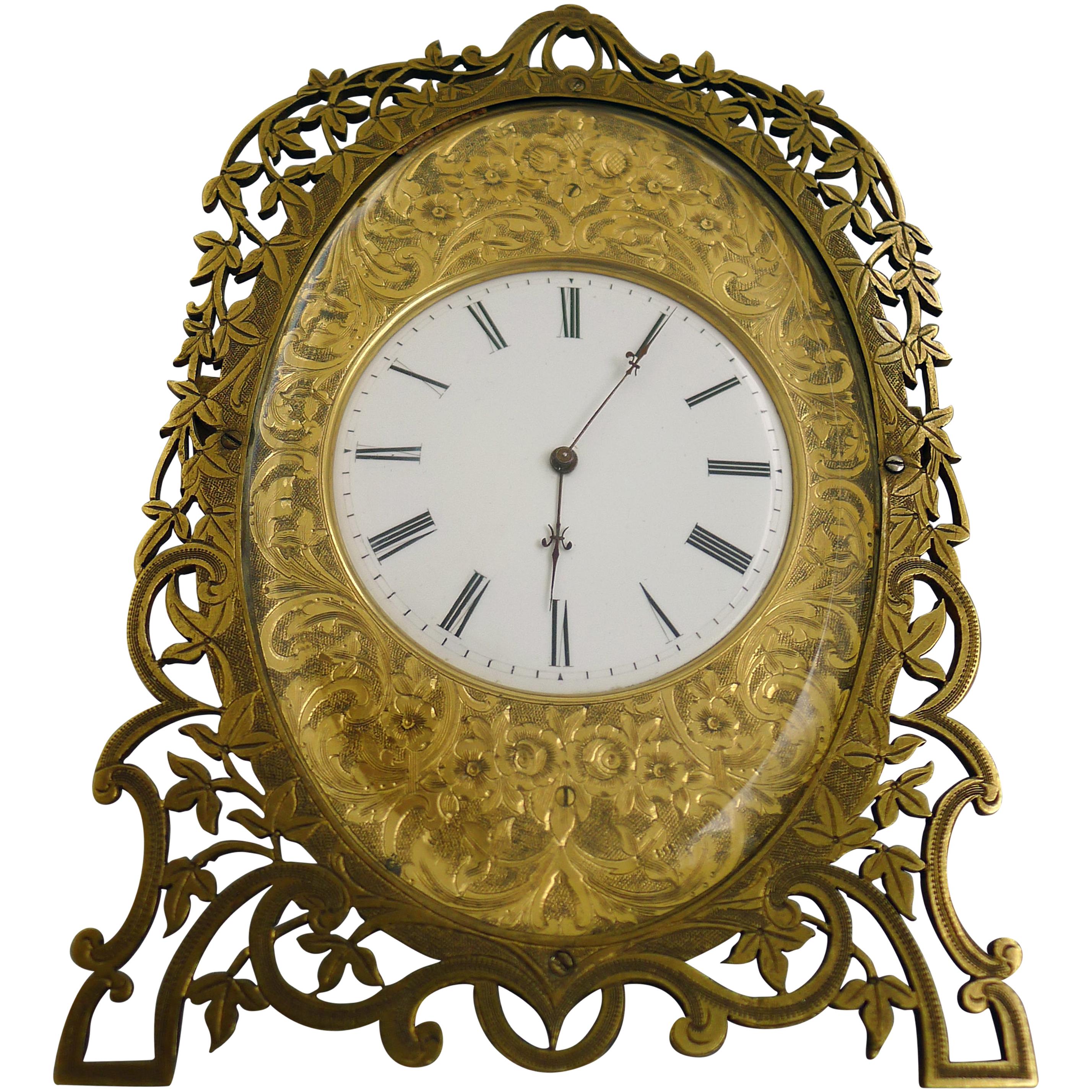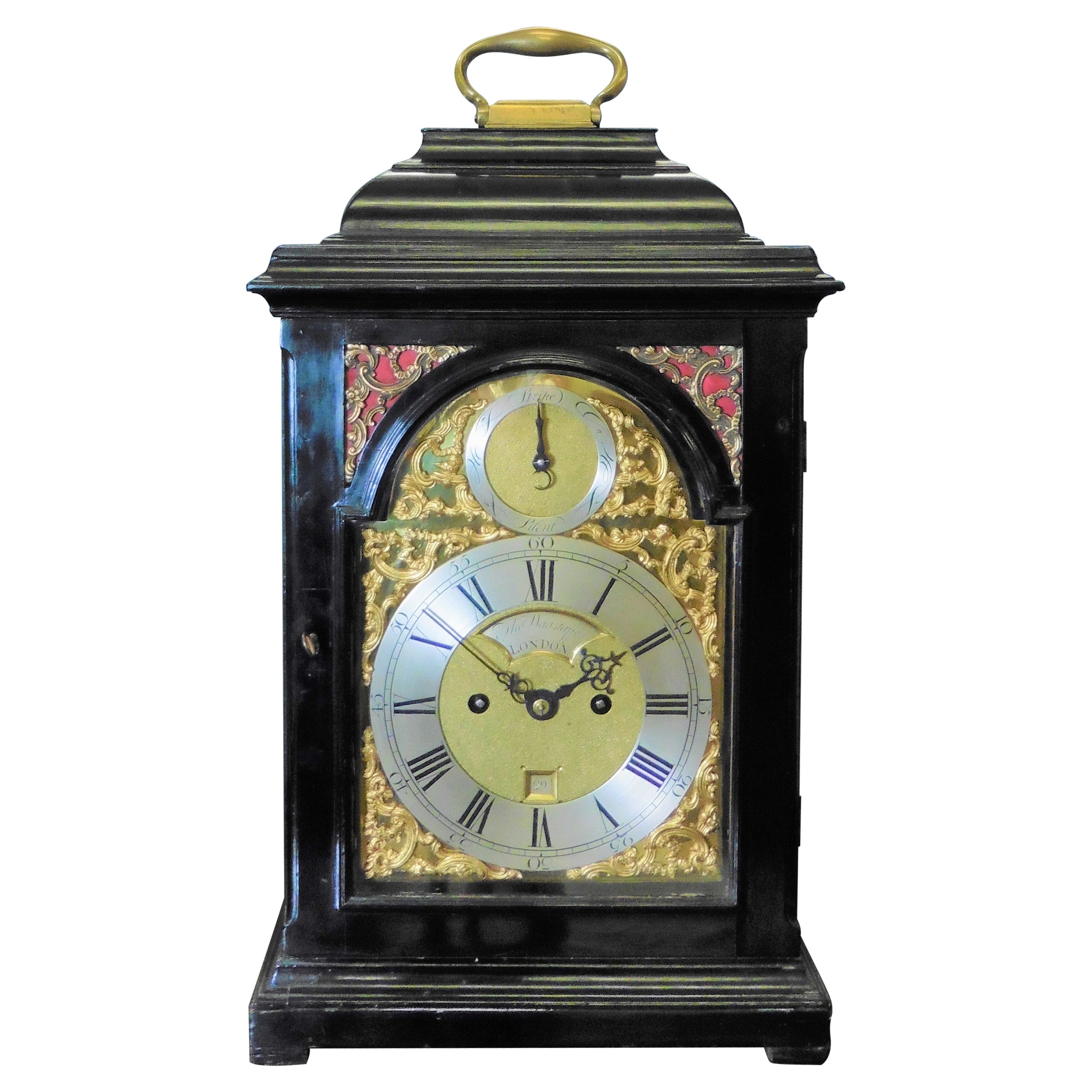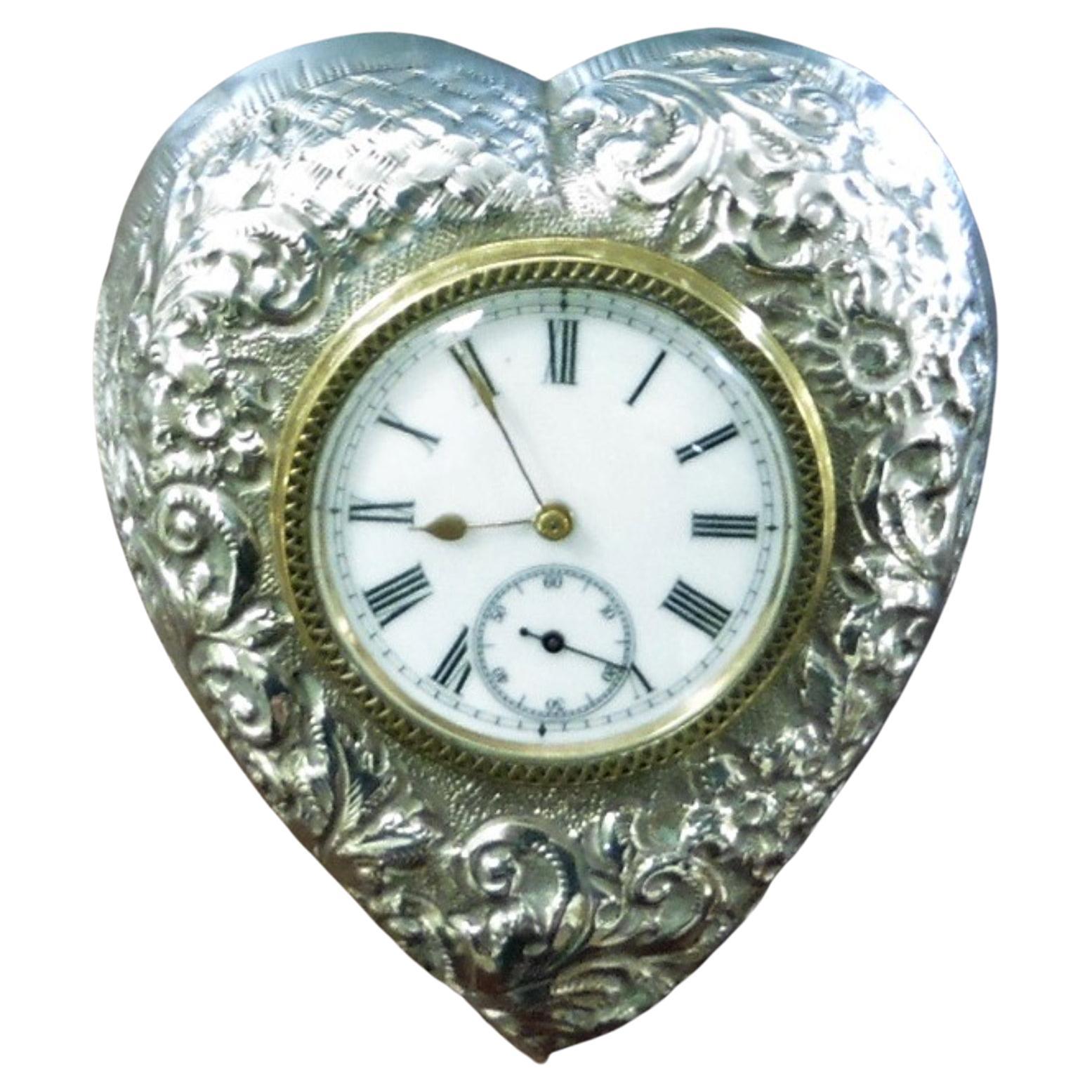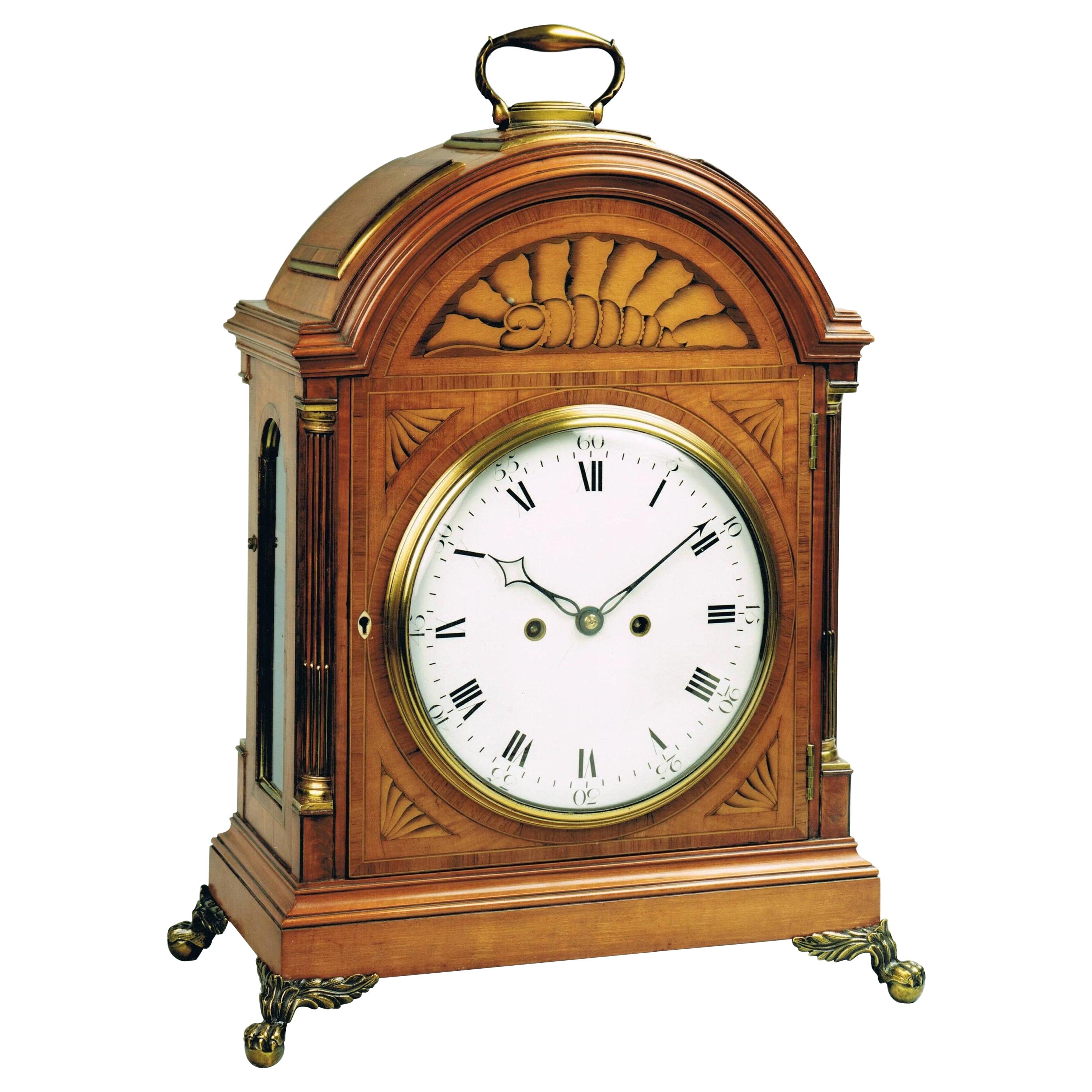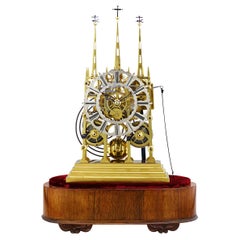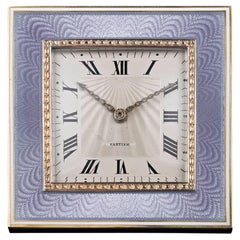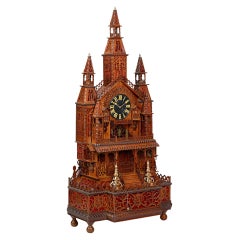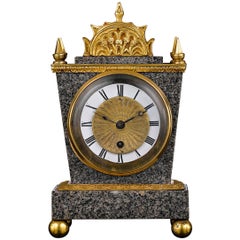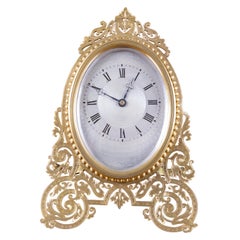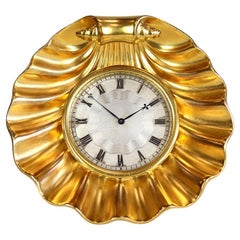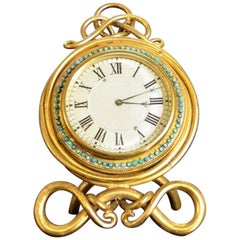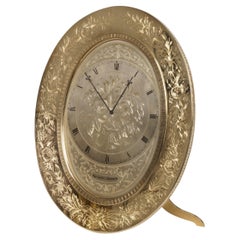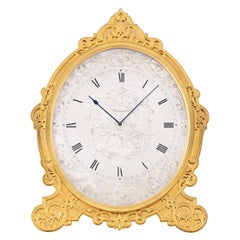
Gilded Oval Strut Clock by Thomas Cole of London
View Similar Items
Want more images or videos?
Request additional images or videos from the seller
1 of 9
Gilded Oval Strut Clock by Thomas Cole of London
About the Item
- Dimensions:Height: 16.75 in (42.55 cm)Width: 13.25 in (33.66 cm)Depth: 6 in (15.24 cm)
- Style:Victorian (Of the Period)
- Materials and Techniques:
- Place of Origin:
- Period:
- Date of Manufacture:circa 1854
- Condition:
- Seller Location:New Orleans, LA
- Reference Number:Seller: 31-01571stDibs: LU891117299642
About the Seller
5.0
Recognized Seller
These prestigious sellers are industry leaders and represent the highest echelon for item quality and design.
Established in 1912
1stDibs seller since 2010
105 sales on 1stDibs
Typical response time: 10 hours
Authenticity Guarantee
In the unlikely event there’s an issue with an item’s authenticity, contact us within 1 year for a full refund. DetailsMoney-Back Guarantee
If your item is not as described, is damaged in transit, or does not arrive, contact us within 7 days for a full refund. Details24-Hour Cancellation
You have a 24-hour grace period in which to reconsider your purchase, with no questions asked.Vetted Professional Sellers
Our world-class sellers must adhere to strict standards for service and quality, maintaining the integrity of our listings.Price-Match Guarantee
If you find that a seller listed the same item for a lower price elsewhere, we’ll match it.Trusted Global Delivery
Our best-in-class carrier network provides specialized shipping options worldwide, including custom delivery.More From This Seller
View AllLitchfield Cathedral Skeleton Clock by Evans of Handsworth
By William F. Evans of Handsworth
Located in New Orleans, LA
This remarkable English Litchfield Cathedral skeleton clock, crafted by Evans of Handsworth, captures the essence of the famed Lichfield Cathedral with its iconic three-spire top and stunning Gothic architecture. This extraordinary timepiece features an intricate skeleton design, revealing its impressive two-train chain fuseé movement that powers an eight-day movement, chiming the hours on a melodious gong. The dial is a masterpiece in itself, intricately pierced and engraved in silver, displaying the time with Roman numerals and blued steel hands. The clock sits gracefully atop its original rosewood base.
The Birmingham firm of William F. Evans of Handsworth was one of the most respected makers of skeleton clocks of the 19th century. The golden age of their manufacture occurred between the 1860s through the 1880s, and the firm was renowned for the stellar quality, grand size and superior materials utilized in the creation of their clocks. Of the many cathedrals they produced, the Litchfield Cathedral skeleton clock has earned a prominent status in today's market, being highly sought-after and coveted by collectors and enthusiasts alike.
Skeleton clocks stand out as exceptional and captivating timepieces, meticulously crafted to reveal the inner workings of the mechanism in all their glory. Originating as early as the mid-16th Century as drum clocks, these intricately designed clocks are a testament to the finest craftsmanship of their time. The French played a significant role in popularizing skeleton clocks around 1750, introducing remarkable spring-driven antique mantle clocks...
Category
Antique 19th Century English Table Clocks and Desk Clocks
Materials
Silver, Steel
Desk Clock by Cartier
By Cartier
Located in New Orleans, LA
This elegant desk clock by Cartier features a soft blue guilloché enamel and gold frame. With Roman numerals marking the hours, the dial's radiant guilloché pattern is well-complemented by hands studded with fine white diamonds. An outstanding example of 1920s design, this remarkable timepiece comes with its original red leather case, excellent condition.
The Cartier tradition...
Category
20th Century French Table Clocks and Desk Clocks
Materials
Enamel, Gold
$48,500
Chimes of Normandy Musical Clock
Located in New Orleans, LA
Chimes of Normandy Musical Clock
Early 20th Century
A masterpiece of horology and woodworking, the Chimes of Normandy Clock exemplifies early 20th-cent...
Category
Early 20th Century Table Clocks and Desk Clocks
Materials
Oak
English Porphyry Clock by Ellicott
By John Ellicott II
Located in New Orleans, LA
A case of exquisite porphyry and doré bronze houses the verge movement of this rare clock by eminent English clock and watch maker John Ellicott. Ellicott's...
Category
Antique 19th Century English George III Mantel Clocks
Materials
Porphyry, Bronze
Mahogany Carriage Clock by James McCabe
By James McCabe
Located in New Orleans, LA
This solid mahogany traveling clock with balance wheel escapement was crafted by celebrated London clockmaker James McCabe for London’s Royal Exchange. Known for exquisite workmanshi...
Category
Antique 19th Century English Other Table Clocks and Desk Clocks
Materials
Brass
Venus Clipping the Wings of Cupid Mantel Clock by Thomire & Cie
By Louis Moinet, Thomire & Cie.
Located in New Orleans, LA
This splendid Empire gilt bronze French mantel clock, signed on the dial by bronzier Pierre-Philippe Thomire and watchmaker Louis Moinet, features an exquisitely detailed scene of Ve...
Category
Antique 19th Century French Empire Mantel Clocks
Materials
Marble, Bronze
You May Also Like
Early Victorian Gilded Strut Clock in the Style of Thomas Cole
Located in Norwich, GB
Early Victorian Strut clock in the style of Thomas Cole.
Gilded frame with engraved scroll work, oval beaded bezel surrounding a beautiful e...
Category
Antique 1840s French Victorian Mantel Clocks
Materials
Brass
A Strut Clock in The Manner of Thomas Cole by Howell, James & Co.
By Thomas Cole (Clockmaker)
Located in Amersham, GB
This beautiful desk timepiece is a rare strut clock, in the form of a gilded scallop shell, with an engine turned silvered roman dial set behind a bevelled glass with distinctive fle...
Category
Antique 1860s English Baroque Revival Table Clocks and Desk Clocks
Materials
Ormolu
Gilded Brass French Strut Mantel Clock
Located in Norwich, GB
Gilded Strut clock with intertwined ribbon decoration, the front embellished with turquoise pastes, gilded bezel with bevelled glass.
Silvered engine turned dial with Roman nume...
Category
Antique 19th Century French Victorian Mantel Clocks
Materials
Brass
Large Gilt Brass Engraved Oval Table Clock by Thomas Cole
By Thomas Cole (Clockmaker)
Located in London, GB
A large oval strut clock
By Thomas Cole
The case constructed from gilt brass and designed to be as thin as possible, finely engraved throughout, of substantial oval size, and supported by means of a fold-out foot, the outer frame with floral engraved border, the silvered dial decorated in conforming manner and denoting the hours in Roman numerals with blued steel hands, its centre decorated in foliate patterns; the movement with four turned pillars, spring barrel, steel balance and lever escapement and signed to the backplate by the retailer, also denoted on the dial's cartouche "Thos Boxell, Brighton," and numbered to the rear.
Circa 1860
Dimensions: H: 11 in / 28 cm
Comparative Literature:
Hawkins, J. B. Thomas Cole & Victorian Clockmaking. Woodbridge: Antique Collectors' Club, 1975; p. 90 (item 28), illustrating a related large oval strut clock.
Thomas Cole (1800-1864)
Son of Thomas Cole Snr, a Somerset clockmaker, Cole is known as a specialist in making decorative timepieces of the highest quality. He exhibited at the Great Exhibition at the Crystal Palace in 1851; he warranted an 'honourable mention' in the Paris Exposition universelle of 1855 and the London 1862 International Exhibition, where he was awarded a medal for 'excellence of taste and design'.
Thomas Boxell of Brighton...
Category
Antique 19th Century English Table Clocks and Desk Clocks
Materials
Brass
Early Tripod Table Clock by Thomas Cole with Glass Dome
Located in London, GB
An extraordinary rustic tripod table clock
by Thomas Cole
Retailed by E. White of London
The circular green velvet-clad base supporting three equidistantly spaced brass imitation logs, from which the clock and its mechanism are suspended; housed within a brass bezel conformingly styled as naturalistic logs, the circular etched and engraved gilt dial with elegant blued steel hands, marked at 6 o'clock "E. White, 20 Cockspur St, London", having the hours marked in Roman numerals; the tapered two-tier movement has a six wheel train with five-spoke crossings between spotted plates, the upper section fixed by blued steel screws to the backplate, enclosing a Brocot-style deadbeat escapement incorporating rubies and train to the centre wheel, the pendulum of most unusual design styled as a lidded cauldron over a simulated fire. Complete with a glass dome and key. The front plate numbered “1637.”
London made, circa 1861
Thomas Cole, (1800-1864)
Son of Thomas Cole Snr, a Somerset clockmaker, his history and works are fully recorded in 'Thomas Cole & Victorian Clockmaking' by John B. Hawkins, published 1975, in Sydney. Known as a specialist in making decorative timepieces of the highest quality, Cole exhibited at the Great Exhibition at the Crystal Palace in 1851; he warranted an 'honourable mention' in the Paris Exhibition of 1855 and the London 1862 Exposition International, where he was awarded a medal for 'excellence of taste and design'.
Hawkins discuss Thomas Cole's tripod clocks...
Category
Antique 19th Century English Table Clocks and Desk Clocks
Materials
Brass, Ormolu, Bronze
English Tripod Table Regulator Clock by Thomas Cole, Retailed by Hunt & Roskell
By Thomas Cole (Clockmaker)
Located in Brighton, West Sussex
A Fine English Tripod Table Regulator Clock by Thomas Cole, With Integral Thermometer and Barometer, Retailed by Hunt & Roskell, London
Signed to the dial for the retailer ‘Hunt & Roskell, London.’
No. 1318 /38
The circular six-inch silvered dial with cast bezel, signed ‘Hunt & Roskell, London’, above Roman chapters and blued steel spade hands, set with a large subsidiary seconds dial below XII, the centre finely engraved with scrolling strapwork decoration. The steel winding square protruding through an engraved and shaped plate immediately below 6 o'clock with handset achieved by adjustment to the rear. The movement with tapered plates joined by cylindrical screwed pillars, a two-part backplate, a going barrel, and deadbeat escapement. The pendulum suspended from the apex of the tripod from a G-bracket, with plumb line above, fine regulation achieved by a sliding cylindrical weight on the rod, terminating in a heavy silvered spherical bob secured via Cole's pendulum-locking system.
The case formed of three cylindrical rods set on a gilt and stepped circular base engraved with scrolling foliage, the recessed centre with a semi-circular glazed barometer with silvered register scale, blued steel hand and manually adjustable gilt recording hand. The tilted thermometer within an engraved and gilded surround. Below the tip of the pendulum is a beat scale resting on a bimetallic bar providing thermal compensation, the base resting on three adjustable gilt-metal levelling nuts.
Retaining its original glass dome and brass winding key.
England, Circa 1855.
This fine and rare timepiece by Thomas Cole is a masterpiece of design.
Described by Hawkins in 'Thomas Cole & Victorian Clockmaking' as “the first English table regulator for a gentleman’s library table,” Cole’s strut clock underwent over eight iterations before achieving a design that combined precision with extraordinary elegance.
The use of a tripod to determine the optimal pendulum suspension point is just one of several ingenious mechanisms Cole employed. Three adjustable nuts serving as feet allow for effective levelling of the clock, while a plumb line and bob ensure precise vertical alignment. Relocating the winding square directly beneath the dial eliminates the risk of scratching the surface or damaging the hands, while the inclusion of a thermometer, angled at 45 degrees, effectively conceals the beat scale and pendulum locking mechanism.
Ingeniously designed, the locking mechanism positioned just below the pendulum’s tip includes a beat scale resting on a brass bar that can be raised to secure the pendulum in place. This mechanism also provides thermal compensation through a bi-metallic strip, which automatically raises or lowers the bob in response to temperature fluctuations.
Both inventive and aesthetically striking, this rare clock exemplifies the highly ornamental Victorian timepieces...
Category
Antique 19th Century English Victorian Table Clocks and Desk Clocks
Materials
Brass, Bronze, Steel
Recently Viewed
View AllMore Ways To Browse
Carriage Trade
Desk Travel Clock
Oval Bedside Tables
Clock Trade Sign
Blue Lacquer Center Table
Antique Desk Portable
Gilded Easel
Roman Pillar Table
Thomas Vines
Folding Tripod Table
Antique Victorian Mantle Clock
Cylindrical Vanity
Victorian Timepiece
Bulky Ring
Folding Traveling Desk
Roman Thomas Table
Victorian Antique Bedside Table
Victorian Oval Desk
